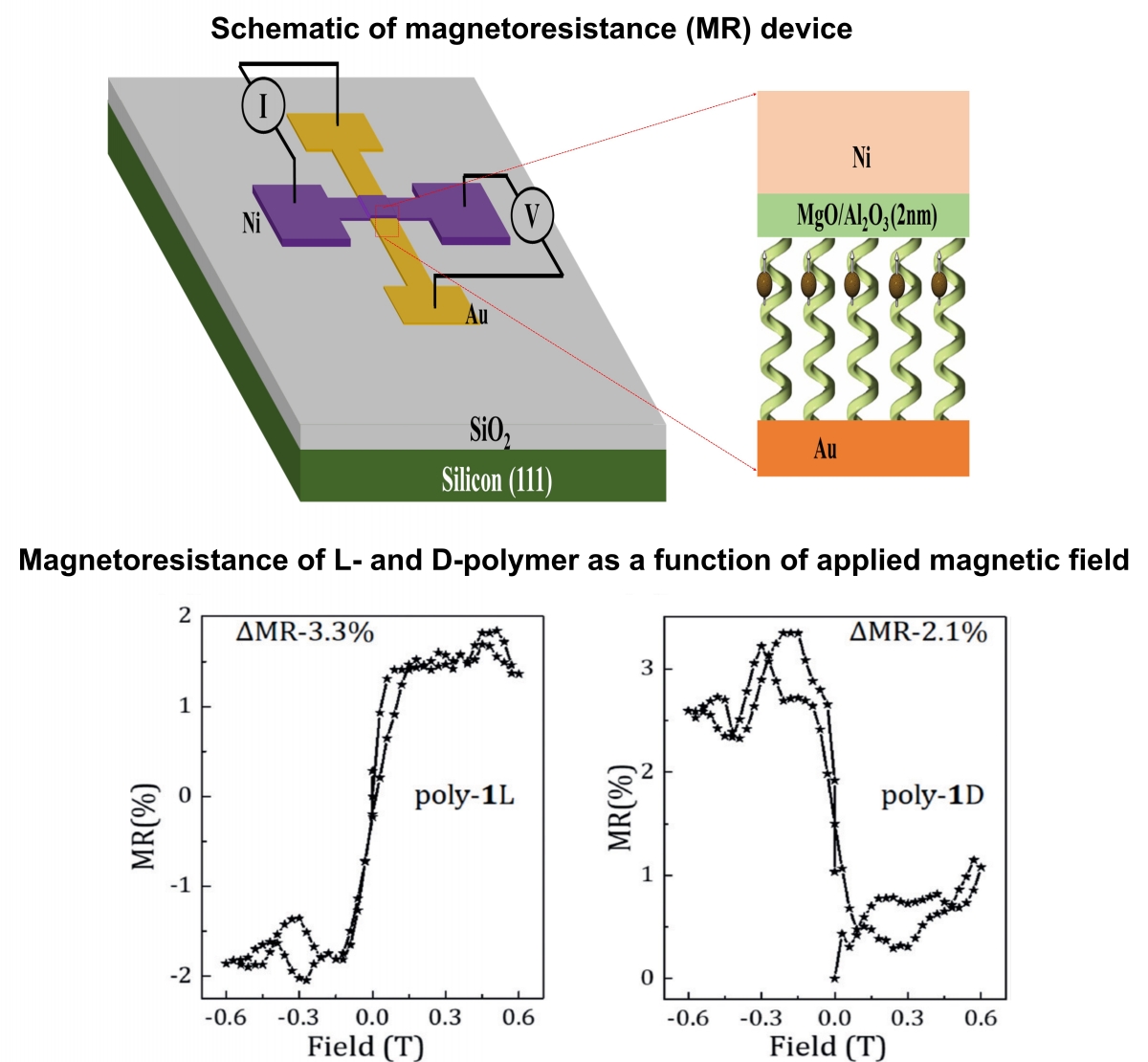We investigate the ability to use the chiral molecules for spintronic applications by producing a spin valve, which operates because of its magnetoresistance (MR) effect. The device we fabricate has a crossbar geometry, which enables us to measure accurately the resistance of the device by the standard four-probe configuration. The magnetoresistance is defined as MR (%) = {(RH – RH=0)/ RH} x 100, where RH is the measured infield resistance and RH=0 is the zero-field resistance. We use CISS-based MR structures, which are different from the common MR devices. In our device, we use one magnetic electrode, the spin transport through the device is determined by the chirality of the molecules, and the single magnetic electrode is the analyzer of the spin conducted. The MR plot we find is asymmetric relative to the field sign, not like in the common MR devices. The reason for the asymmetry is that only one ferromagnetic electrode is used, while the chiral polymers transmit mainly one spin. We are also working to see the effect of temperature on magnetoresistance.
Recently we have studied the magnetoresistance of a polymer with L- and D-configuration and found that the patterns of magnetoresistance with respect to applied magnetic fields is opposite to each other.

- S. Mishra, A. K. Mondal, E. Smolinsky, R. Naaman, K. Maeda,T. Nishimura, T. Taniguchi, T. Yoshida, K. Takayama, E. Yashima, Angew. Chem. 2020, 132, 14779 – 14784.
- C. Kulkarni, A. Mondal, T. Das, G. Grinbom, F. Tassinari, M. Mabesoone, E.W. Meijer, R. Naaman, Adv. Mater. 2020, 32, 1904965.
- S. Mishra, A. K. Mondal, S. Pal, T. K. Das, E. Z. B. Smolinsky, G. Siligardi, R. Naaman, J. Phys. Chem. C 2020, 124, 10776−10782.
- Das T. K., Tassinari F., Naaman R. & Fransson J. Journal of physical chemistry. C. 2022, 126, 6, 3257-3264.

